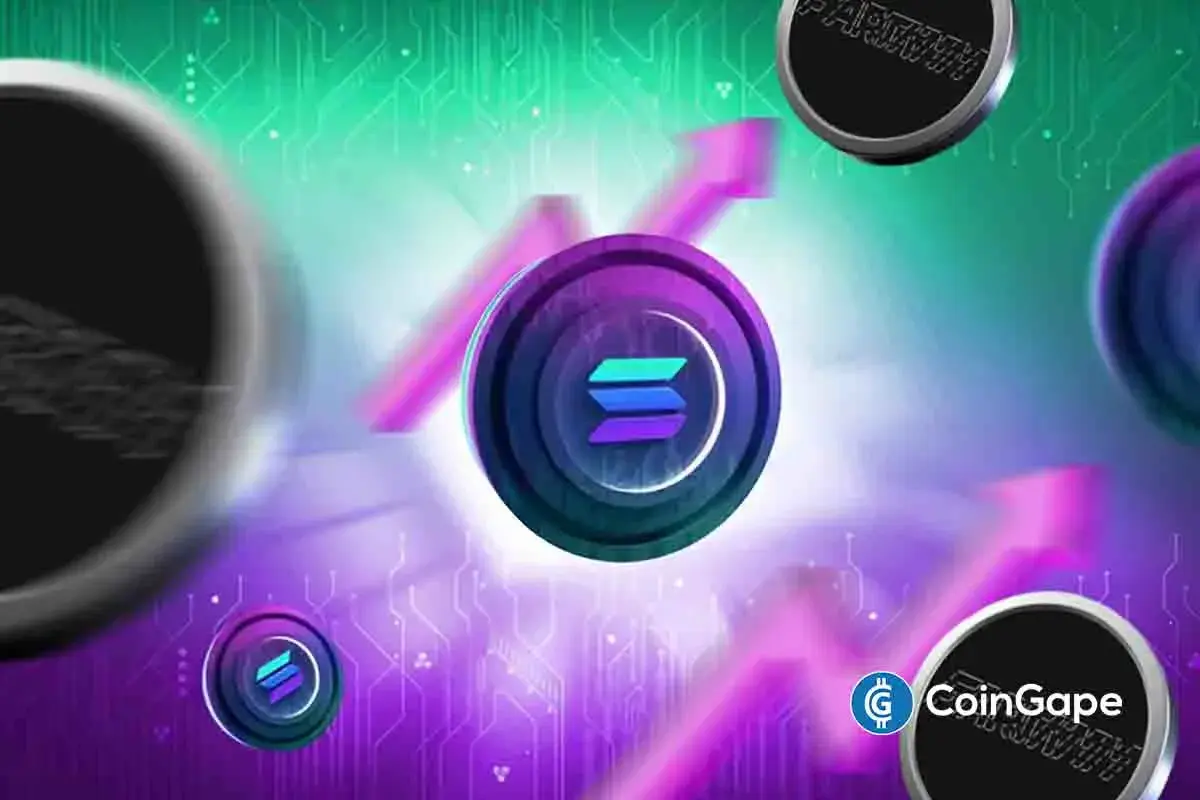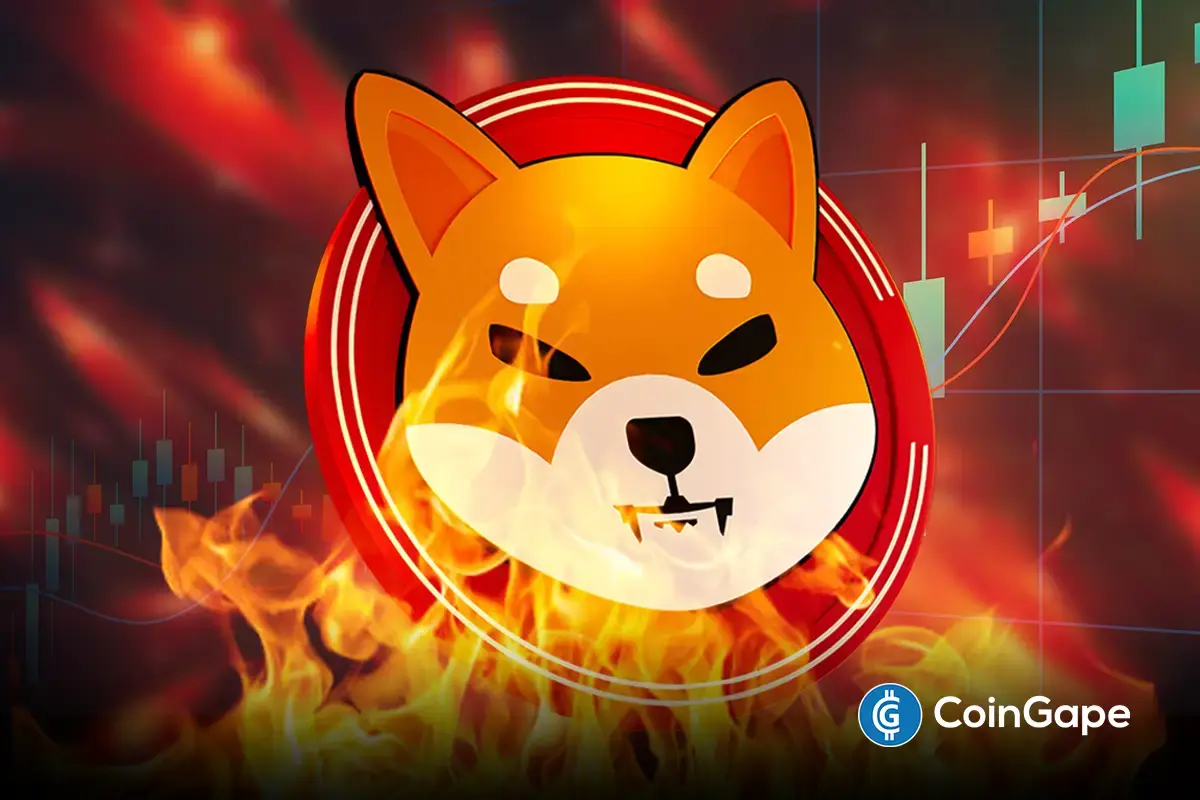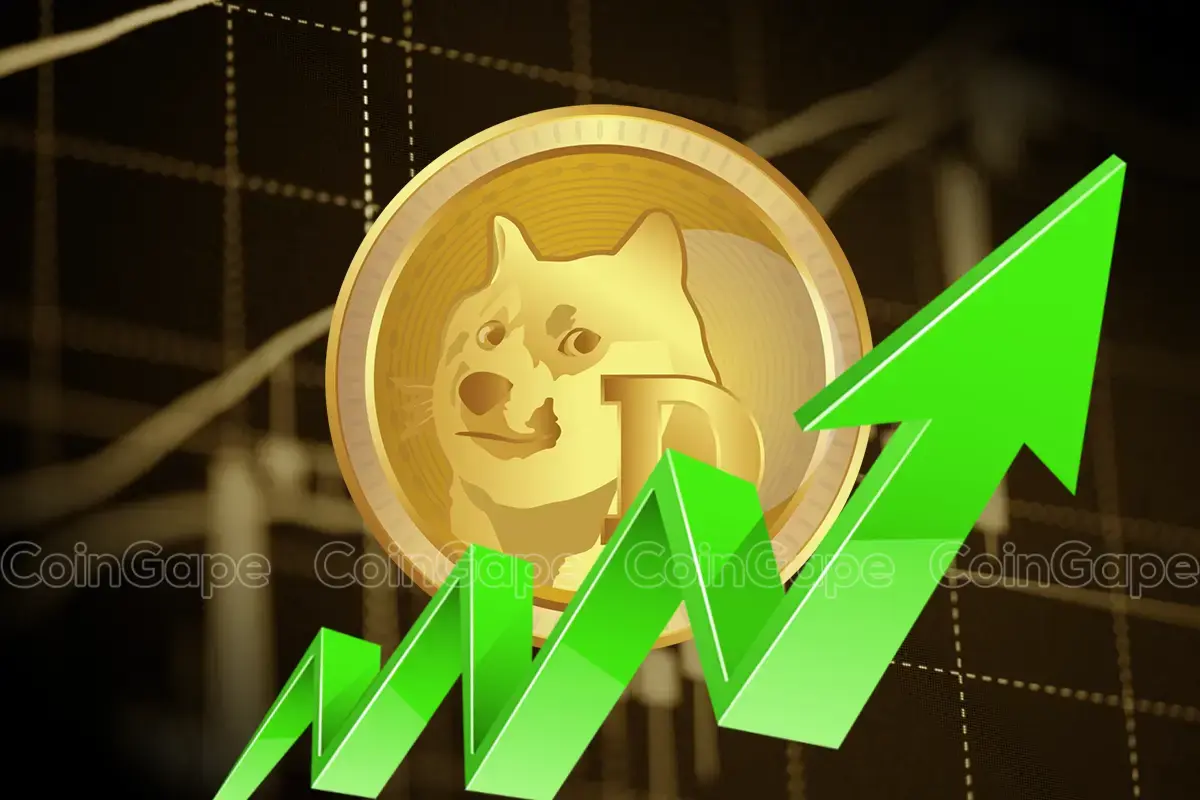Market
Why MOG Price Is Soaring

Meme coin Mog Coin (MOG) is trading at $0.0000019, up 14% in the last 24 hours, positioning it as the market’s top gainer in that period.
BeInCrypto’s analysis of MOG’s on-chain activity shows a notable increase in engagement among its long-term holders (LTHs) over this timeframe. This analysis examines the renewed demand and its potential short-term effects on MOG’s price trajectory.
Mog Long-Term Holders Propel Price
The spike in MOG’s Mean Dollar Invested Age (MDIA) over the past 24 hours highlights increased accumulation among its LTHs. According to Santiment’s data, this metric increased by 4% during the period under review.
An asset’s MDIA measures the average age of dollars invested in all its coins held on the blockchain. A rising MDIA signals that holders are keeping assets in wallets instead of actively trading them.
When older coins are sold or transferred, the Mean Dollar Invested Age (MDIA) decreases, signaling profit-taking or a shift in market sentiment as long-term holders (LTHs) start liquidating their positions. Conversely, a spike in MDIA indicates a HODLing trend, suggesting that holders feel confident enough to keep their assets.
Read more: What Are Meme Coins?
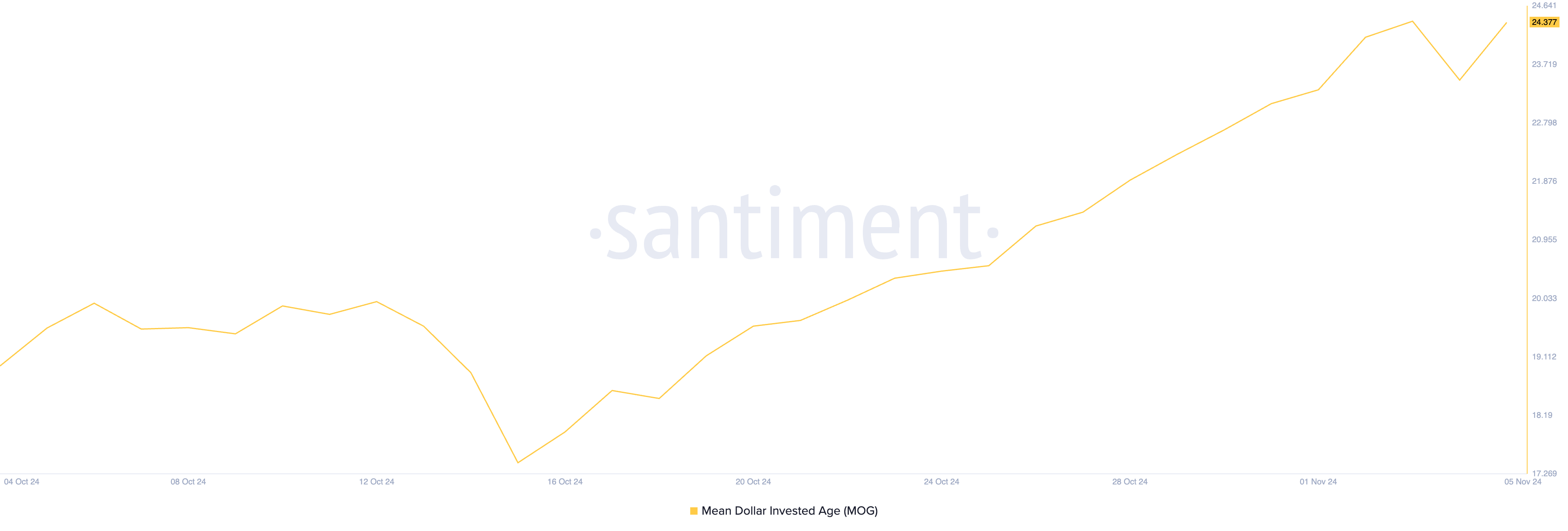
Moreover, for meme coins, which can be highly volatile, a spike in MDIA could imply speculative anticipation of a price rally. This is reflected in MOG’s positive funding rate, which signals a rise in demand for long positions. At press time, the meme coin’s funding rate is 0.20%.
The funding rate in perpetual futures markets is a tool designed to keep the futures contract price aligned with the underlying asset’s spot price. A positive funding rate indicates that long positions (betting on a price increase) are paying fees to short positions (betting on a price decrease).

MOG Price Prediction: Meme Coin May Reclaim Year-To-Date High
If these long bets prove accurate and MOG continues its trend, it will aim to break through the $0.0000021 level. This represents the last major resistance before its year-to-date high of $0.0000024. Successfully crossing this level would allow MOG to reclaim its year-to-date peak.
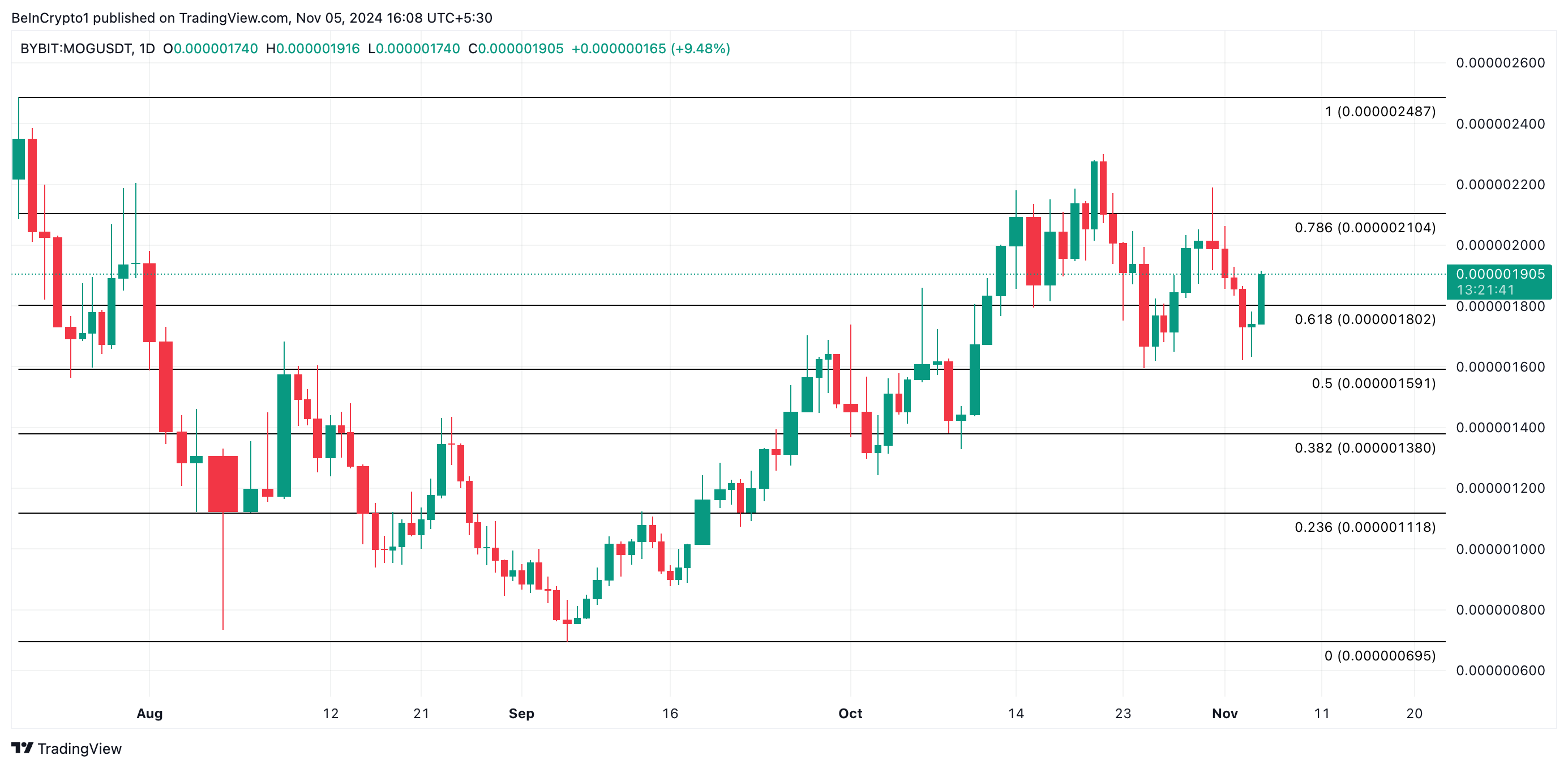
However, if market sentiment shifts from bullish to bearish, this BULLISH projection could be invalidated. In that scenario, MOG’s price may lose its recent gains and potentially fall toward $0.0000015.
Disclaimer
In line with the Trust Project guidelines, this price analysis article is for informational purposes only and should not be considered financial or investment advice. BeInCrypto is committed to accurate, unbiased reporting, but market conditions are subject to change without notice. Always conduct your own research and consult with a professional before making any financial decisions. Please note that our Terms and Conditions, Privacy Policy, and Disclaimers have been updated.
Market
Ethereum ETFs See Seventh Consecutive Week of Net Outflows

Ethereum ETFs have closed yet another week in the red, recording net outflows amid continued investor hesitation.
Notably, there has been no single week of net inflows since the end of February, highlighting waning institutional interest in ETH-related products.
Ethereum ETFs Face Steady Outflows
Ethereum-backed ETFs have recorded their seventh consecutive week of net outflows, highlighting sustained institutional hesitance toward the asset.
This week alone, net outflows from spot ETH ETFs totaled $82.47 million, marking a 39% surge from the $49 million recorded in outflows the previous week.

With the steady decline in institutional presence in the ETH market, the selling pressure on the coin has soared.
Over the past week, ETH’s price has declined by 11%. The steady outflows from the funds backed by the coin suggest that the downward momentum may persist, increasing the likelihood of a price drop below the $1,500 mark.
On the price chart, technical indicators remain bearish, confirming the mounting pressure from the selling side of the market. For example, at press time, readings from ETH’s Directional Movement Index (DMI) show its positive directional index (+DI) resting below the negative directional index (-DI).
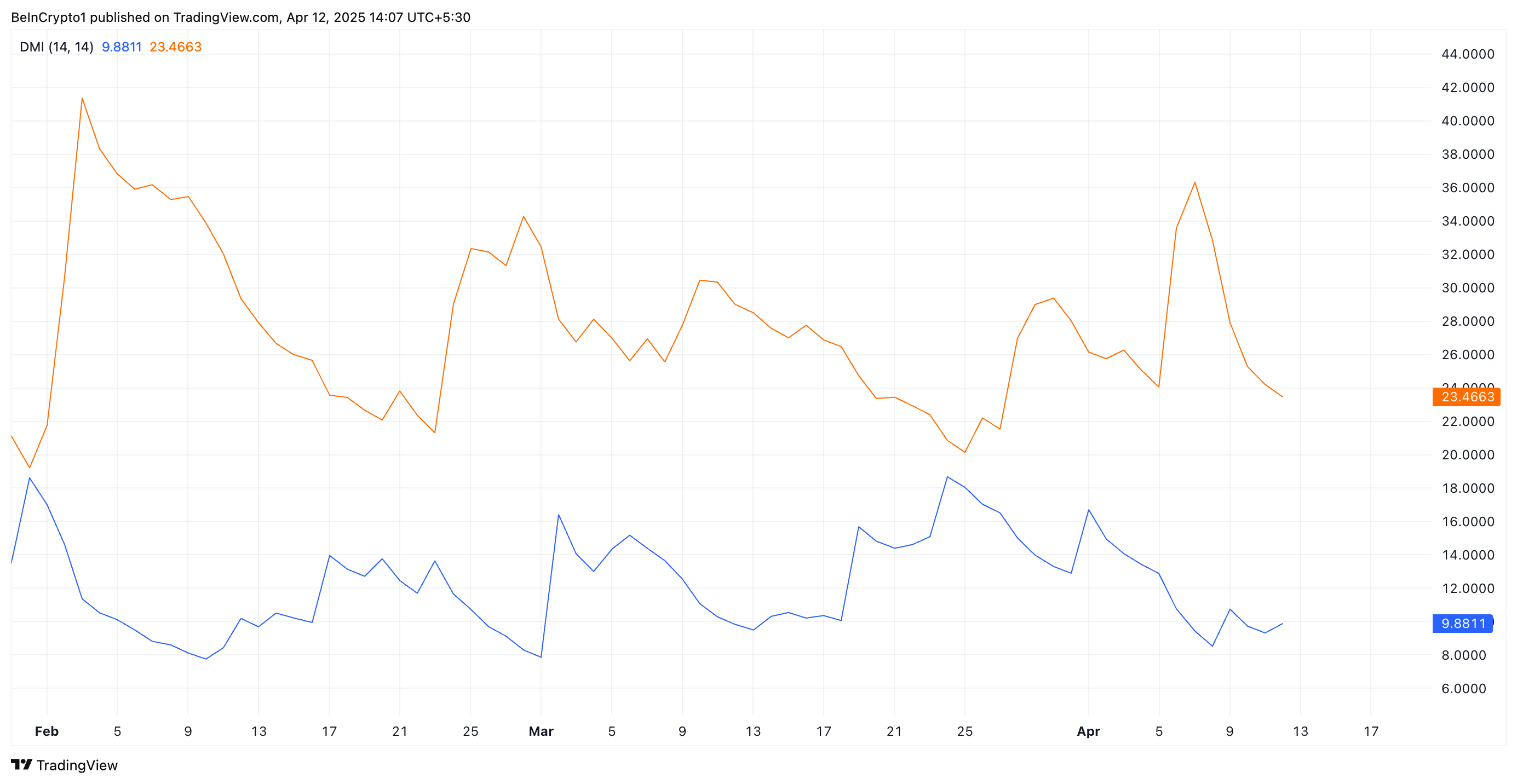
The DMI indicator measures the strength of an asset’s price trend. It consists of two lines: the +DI, which represents upward price movement, and the -DI, which represents downward price movement.
As with ETH, when the +DI rests below the -DI, the market is in a bearish trend, with downward price movement dominating the market sentiment.
Ethereum’s Price Could Drop Below $1,500
The lack of institutional capital could delay any significant rebound in ETH price, further dampening short-term prospects for recovery. If demand leans further, ETH could break out of its narrow range and follow a downward trend.
The altcoin could fall below $1,500 in this scenario to reach $1,395.
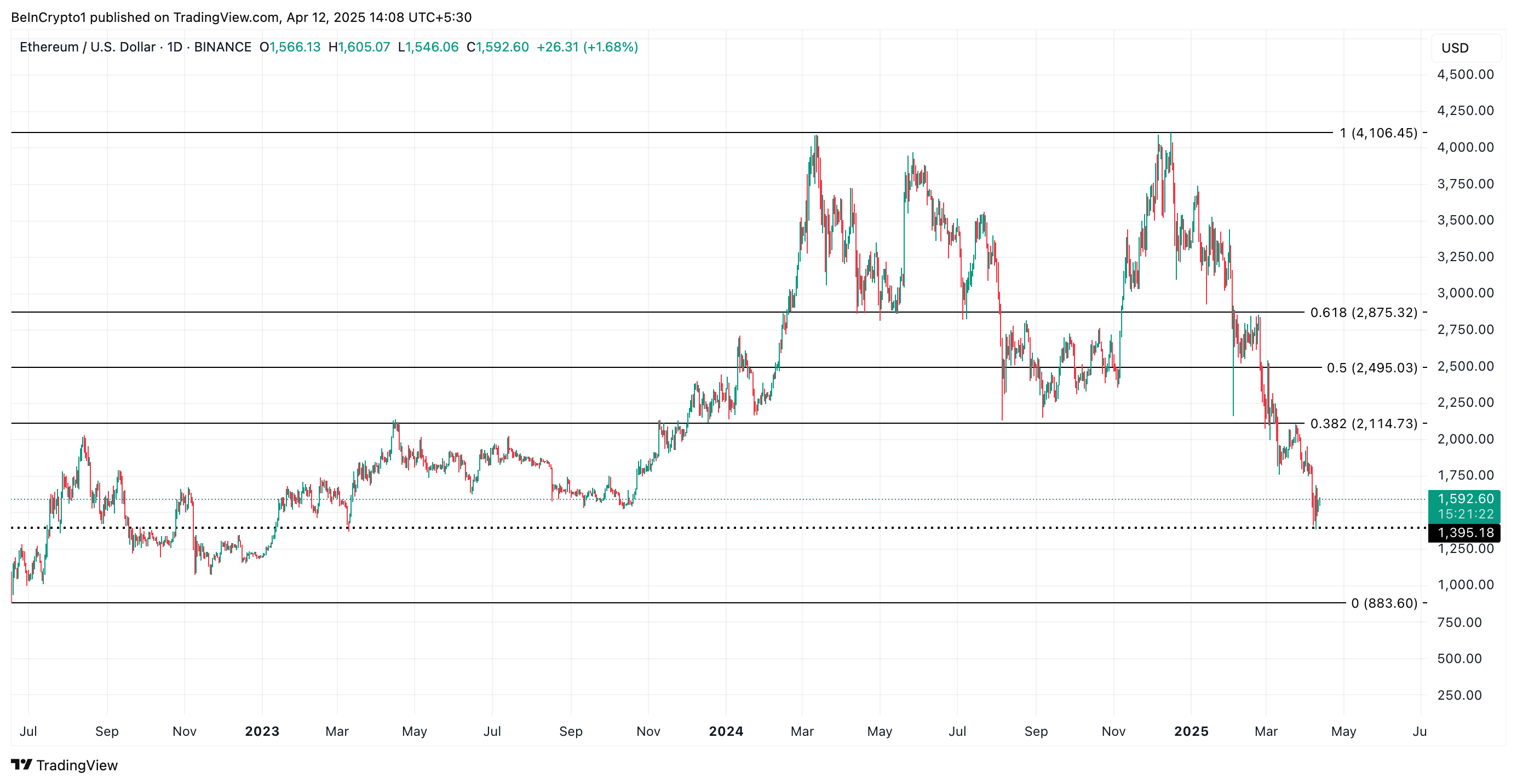
However, if ETH witnesses a positive shift in sentiment and demand spikes, its price could climb to $2,114.
Disclaimer
In line with the Trust Project guidelines, this price analysis article is for informational purposes only and should not be considered financial or investment advice. BeInCrypto is committed to accurate, unbiased reporting, but market conditions are subject to change without notice. Always conduct your own research and consult with a professional before making any financial decisions. Please note that our Terms and Conditions, Privacy Policy, and Disclaimers have been updated.
Market
SEC Signals Readiness to Rethink Crypto Trading Oversight


Mark Uyeda, Acting Chair of the US Securities and Exchange Commission (SEC), has encouraged crypto industry participants to offer input on a proposed framework. The initiative is designed to ease regulatory pressure on digital asset trading.
Speaking at the SEC’s April 11 Crypto Task Force roundtable, Uyeda highlighted the growing disconnect between current regulations and the realities of blockchain innovation.
SEC Considers Federal Licensing Model to Streamline Crypto Compliance
Uyeda likened the evolution of crypto markets to the early days of US securities trading, which began under a buttonwood tree in New York City.
He argued that early brokers created rules that suited the needs of their time. In the same way, modern regulators must now consider frameworks that align with the distinct structure of crypto platforms.
Unlike traditional exchanges, crypto trading systems often combine custody, execution, and clearing into one platform. Blockchain technology makes this integration possible.
Uyeda pointed out that this setup can improve transparency, efficiency, and trading speed. He also highlighted benefits like 24/7 trading through smart contracts and streamlined collateral management via tokenization.
“Blockchain technology offers the potential to execute and clear securities transactions in ways that may be more efficient and reliable than current processes,” Uyeda said.
Still, Uyeda acknowledged that the architects of US securities laws never anticipated blockchain technology or decentralized systems. As a result, compliance challenges have emerged as many tokenized securities remain unregistered and ineligible for national exchanges.
Besides that, existing rules, such as the order protection rule, are also difficult to apply in hybrid trading environments where assets move between on-chain and off-chain systems.
Uyeda also criticized the current patchwork of state-by-state licensing requirements, which create barriers for crypto firms aiming to operate nationwide.
To address these gaps, Uyeda proposed a conditional relief framework that could support experimentation while maintaining investor protections. He also suggested that a unified federal licensing model under the SEC could simplify compliance and enhance market consistency.
“Under an accommodating federal regulatory framework, some market participants would likely prefer to offer trading in both tokenized securities and non-security crypto assets under a single SEC license rather than offer trading solely in non-security crypto assets under fifty different state licenses,” Uyeda said.
Nonetheless, he invited industry experts to recommend specific areas where such relief would unlock practical use cases without undermining market integrity.
Uyeda’s remarks signal the SEC’s growing awareness that digital asset regulation must evolve. While long-term reform may take time, the proposed relief framework could create room for innovation without compromising market safeguards
Disclaimer
In adherence to the Trust Project guidelines, BeInCrypto is committed to unbiased, transparent reporting. This news article aims to provide accurate, timely information. However, readers are advised to verify facts independently and consult with a professional before making any decisions based on this content. Please note that our Terms and Conditions, Privacy Policy, and Disclaimers have been updated.
Market
Crypto Whales Position for Gains with DOGE, WLD and ONDO

Despite lingering market uncertainty fueled by Donald Trump’s escalating trade war, the cryptocurrency market showed signs of recovery this week.
On-chain data reveals that crypto whales took advantage of the volatility to accumulate select altcoins, signaling growing confidence in specific digital assets.
Dogecoin (DOGE)
Leading meme coin Dogecoin (DOGE) has received significant attention from crypto whales this week. This is reflected by the spike in the number of coins purchased over the past seven days by DOGE whale addresses that hold between 100 million and 1 billion coins.
According to data from Santiment, these DOGE holders have accumulated 1.41 billion coins worth over $220 million during the review period. As of press time, their total holdings have surged to 25.68 billion DOGE, marking the highest level since December last year.
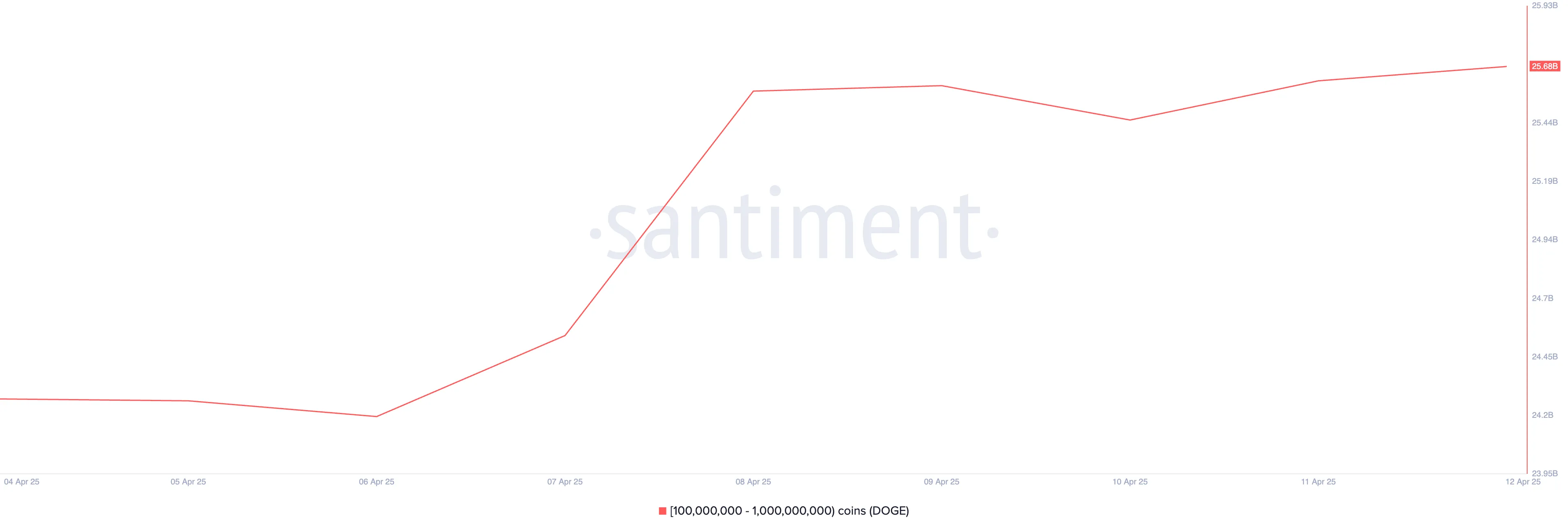
When an asset’s large holders increase their accumulation like this, it suggests increased confidence or anticipation of future price gains. If this continues, DOGE could break above the resistance at $0.17 in the near term and climb toward $0.23.
Worldcoin (WLD)
WLD is another altcoin that has caught whales’ attention this week. The Sam Altman-linked token currently trades at $0.74, shedding 1% of its value over the past week.
During that period, whales holding between 100,000 and 1,000,000 WLD have accumulated 2.63 million tokens valued above $1.94 million.
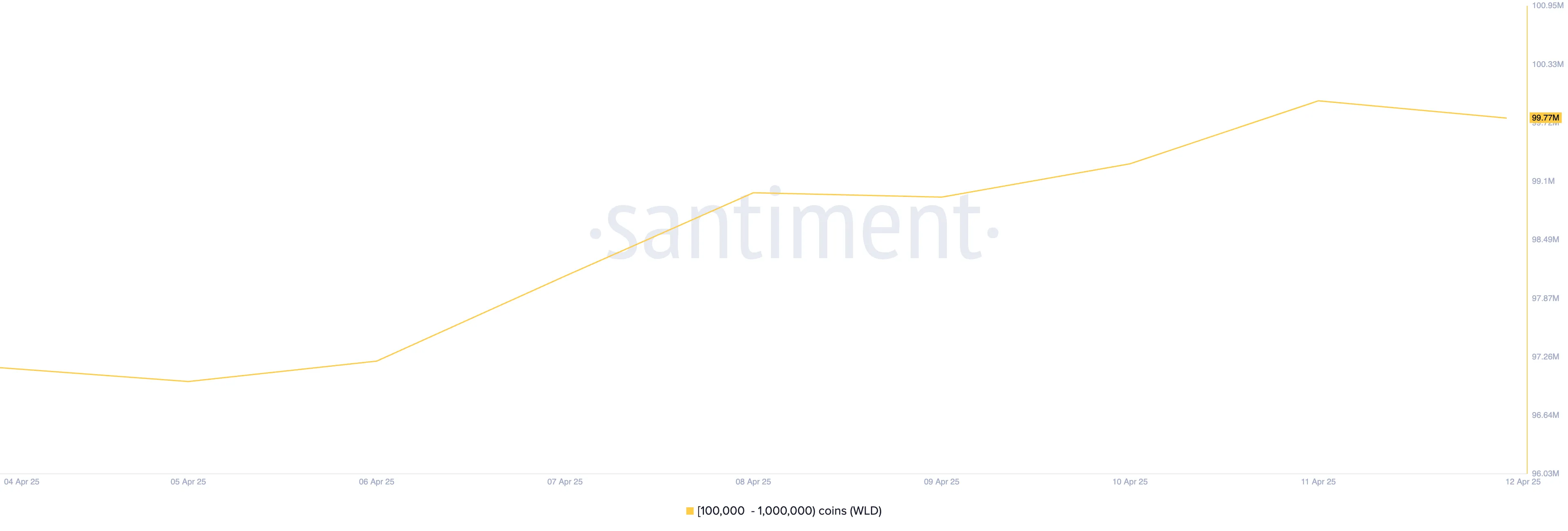
If whale accumulation persists, it could make WLD buck the broader market downtrend to record gains.
Ondo (ONDO)
The real-world asset-based (RWA) token ONDO is also on this week’s crypto whales’ list. According to Santiment, in the past seven days, whales holding between 1 million and 10 million ONDO have purchased 19.41 million, valued at approximately $17 million.
This cohort of ONDO investors currently holds 702.37 million coins.
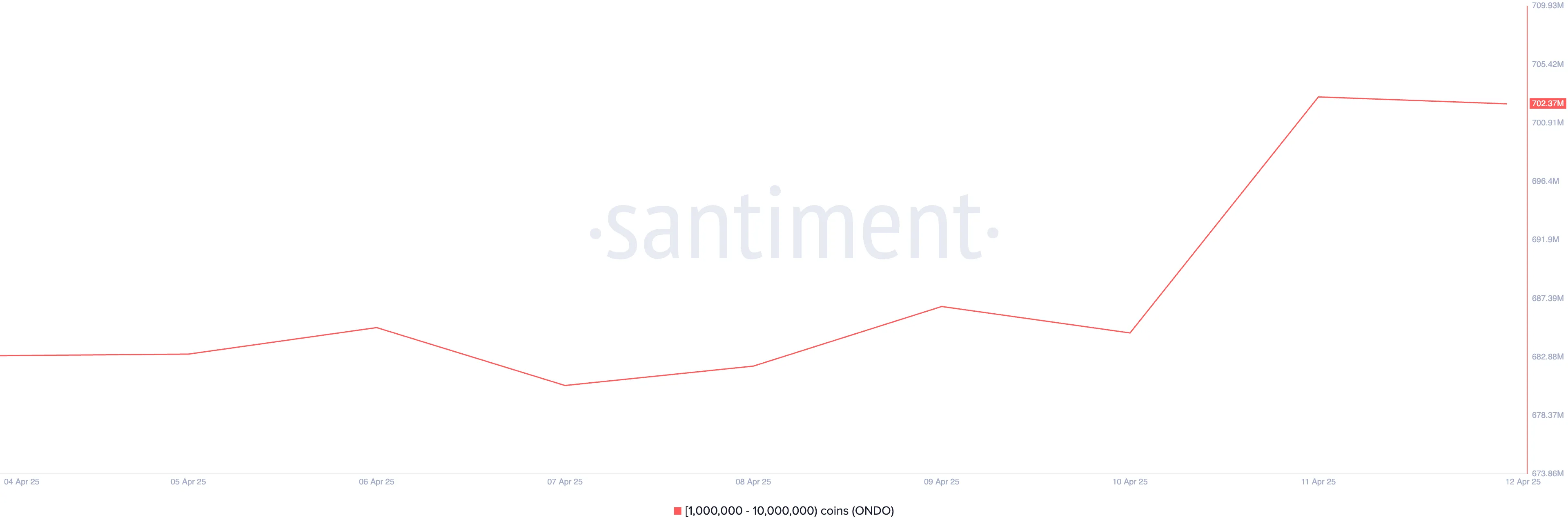
Should this prompt a market-wide ONDO accumulation phase, it could signal the resurgence of interest in RWA-based assets and drive further price momentum in the coming weeks.
Disclaimer
In line with the Trust Project guidelines, this price analysis article is for informational purposes only and should not be considered financial or investment advice. BeInCrypto is committed to accurate, unbiased reporting, but market conditions are subject to change without notice. Always conduct your own research and consult with a professional before making any financial decisions. Please note that our Terms and Conditions, Privacy Policy, and Disclaimers have been updated.
-
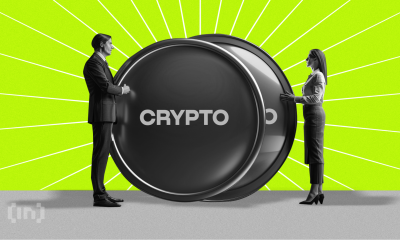
 Market19 hours ago
Market19 hours agoLawmakers Propose the PROOF Act to Avoid Another FTX Incident
-

 Market18 hours ago
Market18 hours agoThis is Why The Federal Reserve Might Not Cutting Interest Rates
-

 Regulation22 hours ago
Regulation22 hours agoUS Senators Reintroduce PROOF Act To Set Reserve Standards for Crypto Firms
-

 Market21 hours ago
Market21 hours ago3 Altcoins to Watch for Binance Listing This April
-

 Market23 hours ago
Market23 hours agoInvestors Shift to Crypto, Gold, and Equities Amid Tariff Volatility
-

 Market16 hours ago
Market16 hours agoCrypto Whales Are Buying These Altcoins Post Tariffs Pause
-

 Market15 hours ago
Market15 hours agoBinance and the SEC File for Pause in Lawsuit
-

 Market13 hours ago
Market13 hours agoPump.fun Reopens Livestreams with Strict Moderation


